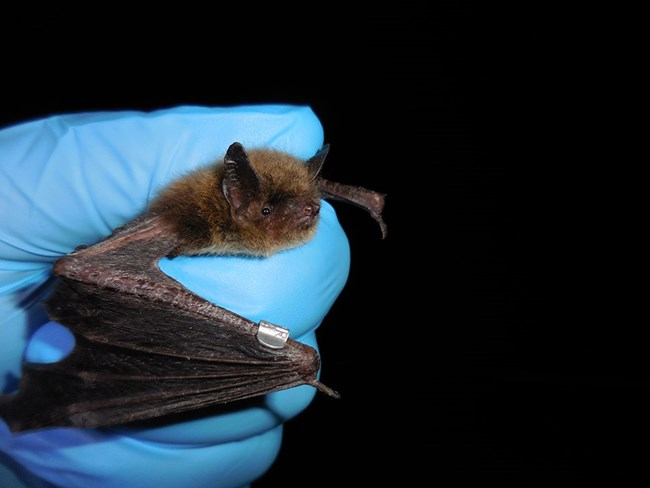
NPS
Overview
The Threatened & Endangered (T&E) Species Coordinator supports parks in stabilizing and recovering listed species. The coordinator also provides support to parks during Endangered Species Act (Section 7) consultations, reports on the status of federally listed species in parks, and progress on recovery efforts, and assists with proactive conservation of declining species to preclude the need to list them.
Regional parks protect several federally-listed species.
Endangered species include:
- Hay’s spring amphipod (Stygobromus hayi)
- Harperella (Harperella nodosum)
- Indiana bat (Myotis sodalis)
- Northern long-eared bat (Myotis septentrionalis)
- Shortnose sturgeon (Acipenser brevirostrum)
- Atlantic sturgeon (Acipenser oxyrinchus ssp. oxyrinchus) and its critical habitat
Threatened species include:
- Small whorled pogonia (Isotria medeoloides)
- Rufa red knot (Calidris canutus rufa)
Two historic endangered species in NCR are:
- Rusty patched bumblebee (Bombus affinis)
- Dwarf wedgemussel (Alasmidonta heterodon)
Other species of interest to parks that were removed from the list because they have successfully recovered include: peregrine falcon (Falco peregrinus) and bald eagle (Haliaeetus leucocephalus). NCR parks also support many state-listed species.
Contact
Contact Threatened & Endangered Species Coordinator Diane Pavek for additional information. If you need assistance from Resource Stewardship and Science (RESS), you may submit a Solution for Technical Assistance Requests (STAR) request online (NPS Only).
Links
Last updated: March 19, 2025
